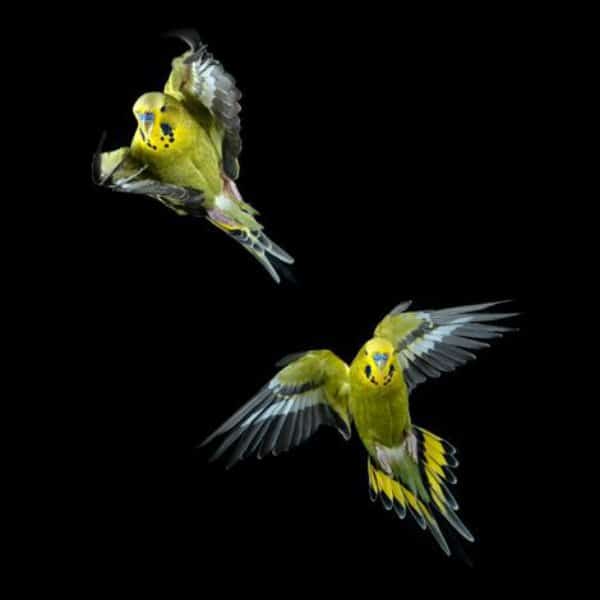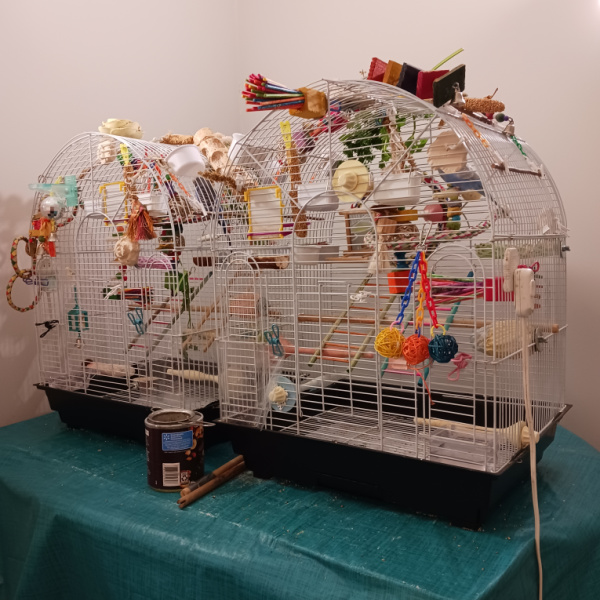Last Updated on by Mitch Rezman
Original verbatim Quora question(s): How do I train a budgie to free flight and come back to me without having to fly away?
How do you train two budgies to free flight?
Can you train two budgies to free flight at the same time?
These questions were found as a single question on Quora.
When we feel our Quora answers will benefit your avian adventures we post them here too.
Humans have been training birds to fly away and return since Genghis Khan had 100,000 Falcons.
Before we get into pointers about recall flight, it’s important to remember that your birds are flighted.
Prior to teaching them how to fly to us we need to teach them how and where to land.
We must think about things like going out for the mail with the bird on your shoulder before going out for the mail with a bird on your shoulder.
Once they realize that flying to you will get them good things like treats, be aware that your birds are always flying towards you, or at least thinking about it.
Flying FID Factoid: Don’t’ leave sharp objects or sticky stuff on any horizontal surface in your home.
A Better Bird Ep 13 How Bird Proof Is Your Home – Video
When leaving a room that requires a door to be closed, you’ll want to always close the door slowly and watch for birds trying to fly through as in walk backwards through closing doorways.
Cockatiels are one of the best flyers. They achieve speeds of up to 30 miles an hour indoors.
We had a rescue albino cockatiel who flew into a wall and ended up behind a dresser the first five minutes she was home.
We clipped her wings but they grew back quickly, almost within 30 days.
Flighted FID Factoid: Our Senegal’s primary flight wings took close to nine months to grow out before she could get her lumbering body airborne.
Teaching a 7 YO bird who had never flown – how to fly – lesson one – Video
We calculated in the video (above) our Senegal parrot’s speed at less than 1/3 of our cockatiels 25-30 MPH.
The top Booda perch on Popcorn, our tiels cage was a landing zone for her.
We placed play stands in most rooms although she relied on a closet or bedroom door to reside on while keeping me company.
Flighted FID Factoid: Always look up when closing closet doors.
I opened the cage door at 8:30 every morning once her full spectrum light that is on a timer came on.
She would immediately find me probably via sound if I wasn’t able to be seen.
Shower, kitchen, bedroom, bathroom it didn’t matter, she would be there to supervise whatever activity I pursued.
One day without thinking I gently swung the door while walking backwards.
We live in a 133-year-old brick apartment building in Chicago and the doors are solid oak.
We just have to push them gently and they will close to an engaged lock.
I remember that day when I had pushed the door closed without realizing I was not watching and sure enough here came Popcorn rotating at a perfect 90° angle slipping through the closing gap – in time!
Flighted FID Factoid: No birds allowed in the kitchen while cooking.
People with cats and dogs don’t get it.
Having a terrestrial pet is nothing like having a bird who lives in three physical dimensions within your home.
Your cat jumping up on the refrigerator, and the dogs that I’ve had that could jump 6 foot fences, don’t count.
The beauty of all of this is that flight recall notwithstanding gives a bird a sense of enrichment.
Peaches our Senegal flies to the top of my office chair that I work at in the living room.
She’ll climb down my arm to play in the five foraging boxes I have set up to protect my 40 inch monitor.
When she gets bored she flies back to her cage for a little nosh or to play on her swing.
15 minutes later she flies back to the top of my chair.
She’s never bored when I’m around.
She’s a happy Senegal.
My point is you don’t need a rain forest environment to keep your bird engaged after they leave their bird cage.
A flighted bird will take advantage of this and be a happier, healthier and safer bird.
Flighted FID Factoid: Flighted birds are less likely to get stepped on.
Editors note: the following is part of one answer on Quora to these questions and my fid-eo (below) response.
“I have seen some one with large psittacines (parrot family) allow his birds to fly free. However, I have never heard of successes with the smaller members of this family”
Note 2nd and 3rd budgie on bird cage.
I make no apologies for ever climbing on a soapbox.
We get inquiries from around the globe about hormonal issues and birds.
That is not the subject of this post but I can tell you unequivocally that a bird who is flighted is like a human who goes to the gym on a regular basis.
More centered, lower blood pressure, greater sense of balance and a better outlook on life while having a great appetite.
Ever hear or say the words “my bird is a picky eater and won’t eat anything new.”
If the bird has clipped wings and never leaves the cage, calories aren’t expended.
Less bird food is required.
The bird gets bored and has less interest in exploration.
I went off road – didn’t I?
Listen for the rumble strips and when it gets quiet, we’re back on the highway.
Flighted FID Factoid: Windows need to be covered – mirrors are dangerous and should not be in a room where birds fly, no glass tables or pad the sharp corners.
It’s best to keep the birds, if they are out and about, in a room where you can see them and keep an eye on their feathered bodies.
You don’t want your birds freelancing in other parts of the house without you.
If a bird comes into your home flighted, I recommend clipping the wings one time (as we did with Popcorn) which allows for getting adjusted to new geography with less danger.
As primary flight feathers grow back and flight gains traction you’ll want to start introducing “landing zones” as I do with our birds.
Flighted FID Factoid: Rotating ceiling fans are called “shredded tweet” in our avian world.
A birdcage can be a familiar place for a bird to fly back to, but a novice flyer can make the mistake of flying into a horizontal cage wall chest first.
I like to start one foot from the cage and toss the bird towards the cage, increasing the distance over the coming weeks.
It’s always best to start with a single bird so the second bird doesn’t become a distraction.
If you haven’t already, regardless of flight training, clicker training should be introduced to your birds teaching them the meaning of positive reinforcement through food.
There’s a number of ways you can begin flight recall
Method one starting with two “T” stands set very close together.
The idea is to get the bird to do no more than hop from one stand to the next.
Using the “click” sound and a small reward for each successive “hop”.
Day by day begin to add distance between the two training stands just inches at a time for starters.
Method two is to introduce a second human and play catch with a flighted bird.
This also helps socialize the bird and in most cases the bird sees it as great fun.
This same strategy would be applied and starting relatively close and then increasing the distance appropriately over time.
Method three works well with needy or Velcro birds as is the case with our nine-year-old female Senegal.
She wants to come with.
(Explanation of method 3 below)
Peaches went into a rescue at the age of six months staying there until she came in our home at 7-1/2.
She never fledged meaning she never flew having clipped wings her entire life.
Flying FID Factoid: When a young bird’s feathers and wing muscles are strong enough for flight the bird is considered fledged.
A fledgling is a bird that has fledged but still relies on mom and dad for feeding.
It is agreed in the avian world that if a bird never fledged, it will not be able to learn how to fly.
Peaches has become a wonderful flyer but her landing techniques are taking longer to develop.
I have noticed that she has built some maps in her head because in certain rooms where she gets bored on a play stand she will exit the room flying south then do an immediate U-turn which points her North towards her the Booda perch on top of her bird cage (Popcorn’s former bird cage).
In warmer weather she comes to work with us every day.
Regardless of season she travels with us when we are on the road weekends.
So she is not a happy Senegal living in her cage at home all day during the winter months after having me in her life all summer.
Once I get home for the evening I use this to my advantage by encouraging her to fly to me, otherwise get left alone in the same room she’s been in all day.
She will not launch from every place in the house yet, so she is developing her own rules – but we are working on that.
If you want longer free flights, I have trained parrots and birds of prey in equestrian stables.
I have also worked with birds in school gymnasiums.
A problem can be getting a bird from out of a high place in the ceiling.
I’ve seen people use everything from super soakers to tennis balls but by being indoors you’re guaranteed that your bird won’t fly away.
If you’re a real disciple of outdoor flight but want to err on the side of caution at home consider an indoor walk-in aviary
Best of Luck
Answered by Mitch Rezman
Edited by Catherine Tobsing
Your raptorial footnote
(raptor’s foot configuration – 3 toes forward, 1 rear)
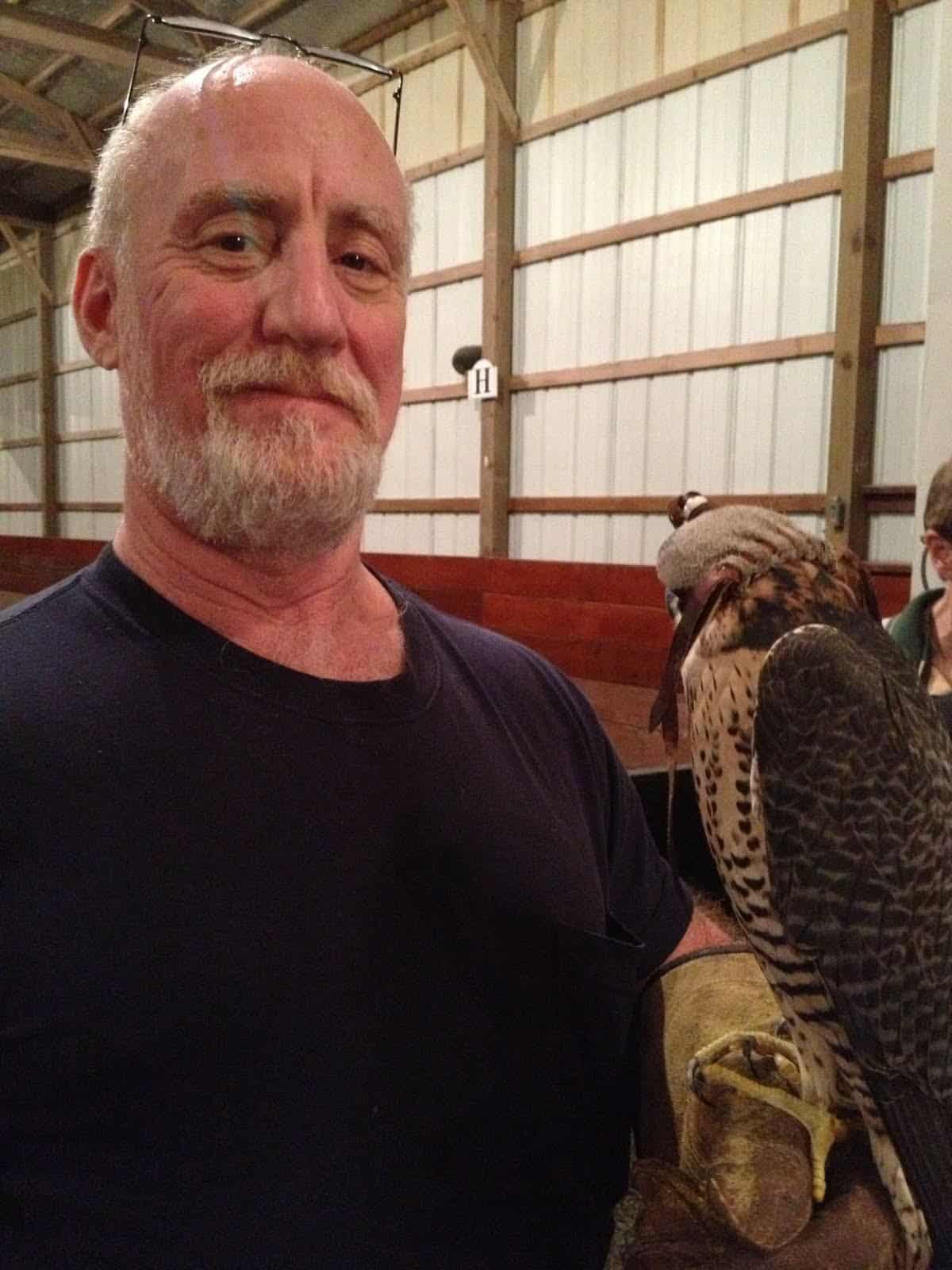
Walking the walk – me ‘n Alvin ( a Peregrine falcon in an equestrian stable for recall training)
Author Profile
Latest entries
 PigeonsJune 20, 2025How Do Parrots Thrive in Cities Outside Their Native Habitats?
PigeonsJune 20, 2025How Do Parrots Thrive in Cities Outside Their Native Habitats?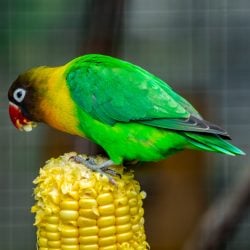 Feeding Exotic BirdsJune 20, 2025Is Corn On the Cob Safe for Pet Birds?
Feeding Exotic BirdsJune 20, 2025Is Corn On the Cob Safe for Pet Birds? Bird & Parrot AnatomyJune 19, 2025Would You Like a Comprehensive Guide for Training Your Bird?
Bird & Parrot AnatomyJune 19, 2025Would You Like a Comprehensive Guide for Training Your Bird?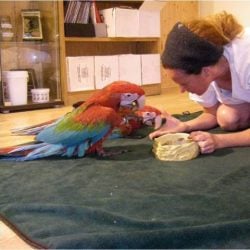 Feeding Exotic BirdsJune 19, 2025Here Are Three (Video) Strategies to Help Your Bird Forage
Feeding Exotic BirdsJune 19, 2025Here Are Three (Video) Strategies to Help Your Bird Forage
